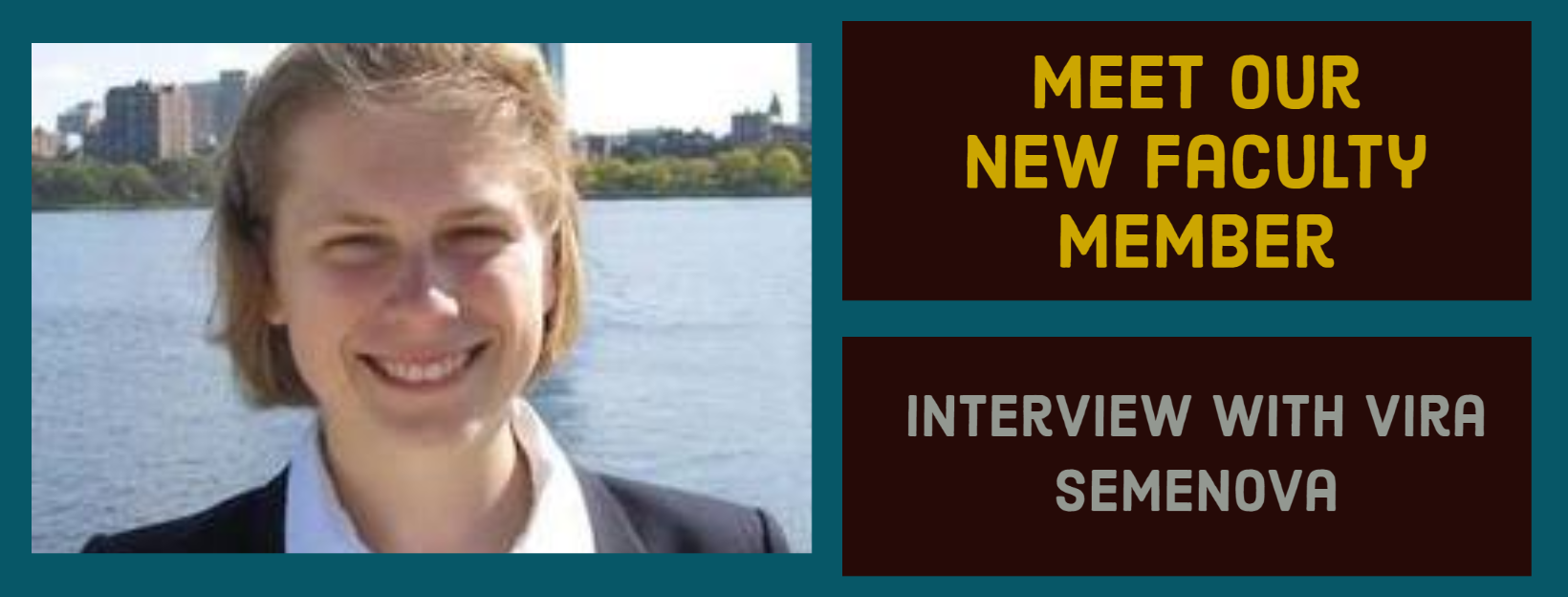
We are thrilled to welcome Vira Semenova, who is joining the economics department as an assistant professor. Professor Semenova received her Ph.D. in economics and statistics from MIT in 2020 before joining Harvard University as a postdoctoral fellow. Professor Semenova’s research is mostly focused on machine learning techniques and the statistical analysis of high dimensional datasets.
________________________________________________________________________________________________________________
You started your education in Ukraine, before completing a master’s degree in the United Kingdom then moving to the United States. What led you to the United States?
The book ‘Econometric analysis’ by W.H. Greene, the only Econometrics textbook I came across in the college library, inspired me to apply to graduate school. The interest in Econometrics has led me to the University of Cambridge, UK, and, eventually, to the Massachusetts Institute of Technology.
How do these countries differ when it comes to understanding the role of economics as a field?
During my college time in Ukraine, economics was equated to a normative prescription on how the government should make spending and investment decisions. In contrast, in the U.S. everything related to the decision-making of individuals, firms, and institutions is called economics! My first graduate research project was an eye-opening experience. The project was to assign students to schools based on reported preferences and school capacities, based on the actual data from Boston Public Schools and New Orleans. The observation of how mathematical and formal, yet practically important, economics can be has given me a massive inspiration to continue.
Much of your work is devoted to developing machine learning tools for economics. What new opportunities do those techniques offer to economists?
Before machine learning was introduced in applied economics, the analysis was limited to numeric data sets. Now, these techniques make it possible to use images and text. In addition, these techniques can automate specification choices which economists typically have little intuition about, thereby reducing subjectivity of the analysis.
As an econometrician, how does your work differ from that of a statistician or a data scientist? Do they differ in the type of questions, the nature of the databases, or something else more fundamental?
The terms data scientist, statistician, quantitative analyst, and quantitative researcher depend on the conext. One might think that a data science role requires stronger programming proficiency, while an economist role is more focused on causal modeling. Some of my interview experiences support this view, while others suggest the complete opposite. Thus, I would not attribute the nature of the work solely to its name.
Tell me about your graduate research work.
In my graduate school, I worked on the causal inference about economic parameters, such as the average treatment effect. Usually, such parameters depend on a complex unknown object, for example, the probability of receiving treatment given subject characteristics. In randomized trials, it is often the case that data can only bound the target parameter from above and below, but cannot identify the parameter itself. I show that the gap between the lower and the upper bound can be close to zero if the pre-treatment characteristics predict the post-treatment variables sufficiently well, and leverage machine learning to find the most useful pre-treatment variables.
What are some of the research questions that you are currently thinking about?
I am looking forward to applying non-standard data, such as product images and descriptions, into economic analysis. I am especially interested in how to correctly infer about a causal link between an image and an outcome, such as a purchase decision, from a complex numeric representation that image has.
What motivated you to join Berkeley Economics? What collaborations are you looking forward to in the Berkeley community?
Before joining Berkeley, I have heard from my MIT advisors that Berkeley Economics department is a very supportive and collegiate place, much like a family! Nevertheless, I could not even imagine how supportive it will be! I am very grateful to my labor and econometrics colleagues for their continued feedback on my research and am looking forward to meeting them in person, as well as the rest of the department, when the pandemic conditions allow.
What are you looking forward to in your move to the bay area?
I have never been to the Bay Area before my first interview at U.C. Berkeley. I am looking forward to exploring it with my husband Oles, a physicist working in quantum computation, and joining the Berkeley ballroom dance team. Oles and I have danced competitively at MIT for several years and are looking forward to continuing! We might also join local science olympics initiatives to train high school students, as both Oles and I have represented Ukraine in internal competitions in math and physics.


